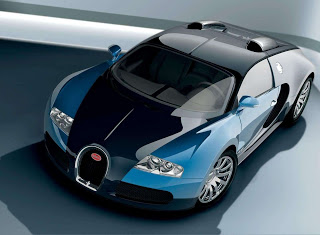
 |
| EB 16 Bugatti Concept |
Back in April 1998 Volkswagen group added a new member to their family. The new member had a world class reputation of producing one of the most powerful and charismatic cars back in the 1900.
 |
| Rear view |
 |
| Most powerful steering system |
 |
| Move at over 400kph and still enjoy some music |
 |
| First Bugatti to go on sale |
 |
| World record breaker |
 |
| Side view |
 |
| Still breaking records |
 |
| Twin air intakes at the back |
 |
| 2006 model |
 |
| Minor changes but still the same |
 |
| Rear view of the 2006 model |
 |
| Front view |
 |
| The key |
 |
| Bugatti Veyron Bleu Centenaire |
 |
| Rear view |
 |
| Bugatti Veyron Centenaire |
 |
| Posing outside the Bugatti founders mansion |
 |
| Old, the new |
 |
| Bugatti Veyron Fbg Par Hemmes |
 |
| Side view |
 |
| Front view |
 |
| Rear view |
The Volkswagen Group chairman Ferdinand Piëch was aware of this and in 2001 he promised the world that the next Bugatti will be the be the fastest, most powerful, and most expensive car in history.
People thought it was a joke but Bugatti, which had a carefully selected team of engineers, worked hard and underwent many challenges. They first prototypes had many problems, prototype one crashed as it was attempting it high speed capabilities while another span out of control in front of a public demonstration back in 2003. This delayed the eventual debut of the car leaving doubts on the reality of Ferdinand promise.
The engineers went back to the drawing board and made numerous changes to the original design. The result of many months of hard work was the Veyron. A car named after a famous French racing driver Pierre Veyron who worn a 24 hour race with Bugatti’s first sports car.
 |
| Bugatti Grand Sports |
 |
| It rear side |
 |
| Removable roof |
 |
| Side view |
 |
| Side view with the roof with the roof up |
 |
| Rear side |
 |
| Rear side with the roof up |
 |
| New Veyron headlights design |
The original Bugatti was to have a W18 engine but the engineers decided on a W16 engine (16 cylinders in 4 banks of 4 cylinders, or the equivalent of two narrow-angle V8 engines mated in a V configuration) Each cylinder has 4 valves, for a total of 64, but the narrow V8 configuration allows two camshafts to drive two banks of cylinders so only 4 camshafts are needed. The engine is fed by four turbochargers, and it displaces 8.0 L (7,993 cc). In simple terms it is one of the most complicated engines ever produced to date. Connected to the complicated engine is a dual-clutch DSG computer-controlled manual transmission with 7 gear ratios via shifter paddles behind the steering wheel. The change gears at a speed of 8 milliseconds in either manual mode or full automatic.
 |
| Bugatti Veyron Purr Sang |
It consumes fuel unlike any other car I have ever known. In the urban environment the millage is recorded at 40.4 L/100 km. That’s not alarming considering that at full speed the Veyron will be consuming fuel at an average of 125 L/100 km. Hence the fuel tank will be empty in 12 minutes. Another shocking fact is that the tires last for 50 minutes at full speed before they let go.
To drive the Veyron one has to undergo training at the Bugatti driving school. The driver is first expected to pass a driving test that adapts the driver to the car’s everyday top speed. It is listed at 234 mph (377 km/h). When the car reaches 137 mph (220 km/h), hydraulics lower the car until it has a ground clearance of about 3 1/2 inches (8.9 cm). At the same time, the wing and spoiler deploy. After this drivers are exposed to the top speed test. The driver must, using the key, toggle the lock to the left of his seat in order to use the maximum speed of 253 miles per hour (407 km/h). The key functions only when the vehicle is at a stop. If all systems are go, the rear spoiler retracts, the front air diffusers close and the ground clearance, normally 4.9 inches (12.4 cm), drops to 2.6 inches (6.6 cm).
 |
| Massive spoiler that acts as the air brake |
In case you are on a Bugatti doing over 400km/h and a cow steps in the middle of the road, you don’t need to worry. The engineers fitted it with fade free carbon-ceramic discs. The rear spoiler also acts like an air brake and snaps to 70 degree angle immediately the brakes are applied. The result is a deceleration from 406 Km/h to 0 in just 10 seconds, giving you enough time to avoid the cow on the road.
The interior is reflects the historic interior design old Bugatti’s used to have. The whole interior is covered by leather while the switches and knobs are made of polished aluminum. The driver enjoys plenty of room while being entertained by the amazing stereo system in the car. The seats hold the driver firmly while special developed seat belts keep the driver firmly seated on their seat.
 |
| Father of the super sports |
The price for all this is set at £1million (Kshs 120 million), a considerable fair price considering it takes £ 5.2 million (around Kshs 800million) to produce a Veyron.
